Tate no Yuusha no Nariagari, Its Influence, and Its Inspirations
06 January, 2023
This post contains minor spoilers for Fushigi Yuugi, although an effort is made to be vague. Also, rape accusations are mentioned and slavery is extensively discussed. If any of these bother you, feel free to click away.
Tate no Yuusha no Nariagari is among the most popular of contemporary isekai light novels, with 22 volumes released, multiple spin-offs, 38 anime episodes, and a 3rd season announced as of this writing; although not a founding member, it was the one which turned the Isekai Quartet into a misnomer.
The concept of magic, self-improving weapons linked to particular characters is an old trope in fantasy, notably appearing in Magic Knight Rayearth.

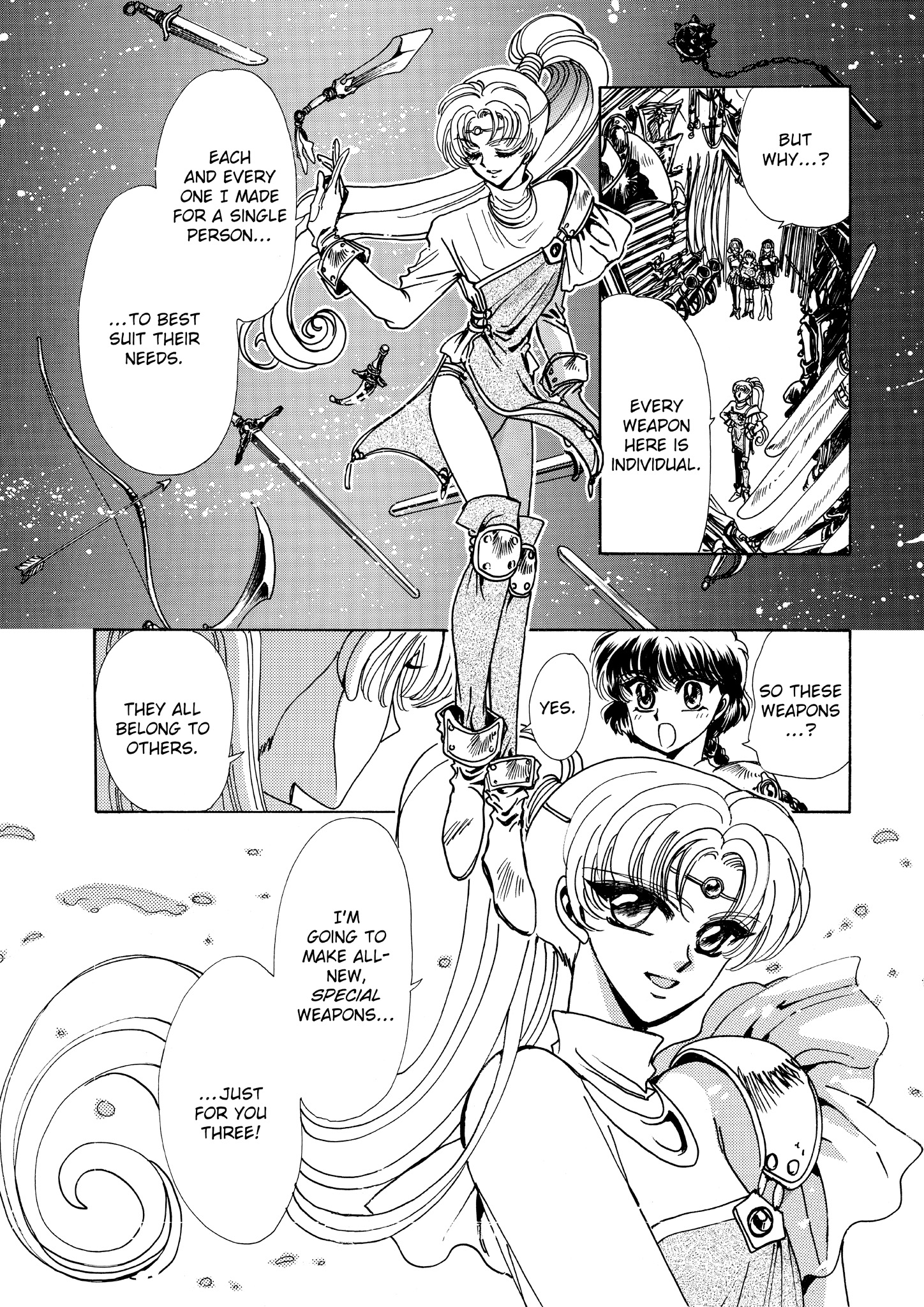 Tate no Yuusha places an interesting and unfortunate spin on this, with its title character unable to deal much damage to opponents, being restricted solely to the use of a shield. Rayearth may not be the direct inspiration in this case, however, as character classes and weapon proficiency restrictions appear in the very earliest role-playing games, and upgradeable gear is incredibly common in massive multiplayer online RPGs in particular.
Tate no Yuusha places an interesting and unfortunate spin on this, with its title character unable to deal much damage to opponents, being restricted solely to the use of a shield. Rayearth may not be the direct inspiration in this case, however, as character classes and weapon proficiency restrictions appear in the very earliest role-playing games, and upgradeable gear is incredibly common in massive multiplayer online RPGs in particular.
It is also one which, while ultimately going in its own direction – telling a tale of revenge and redemption, and of saving the world from a series of apocalyptic “waves” – begins with a fascinating summoning tale that pays more than ample homage to its predecessors.
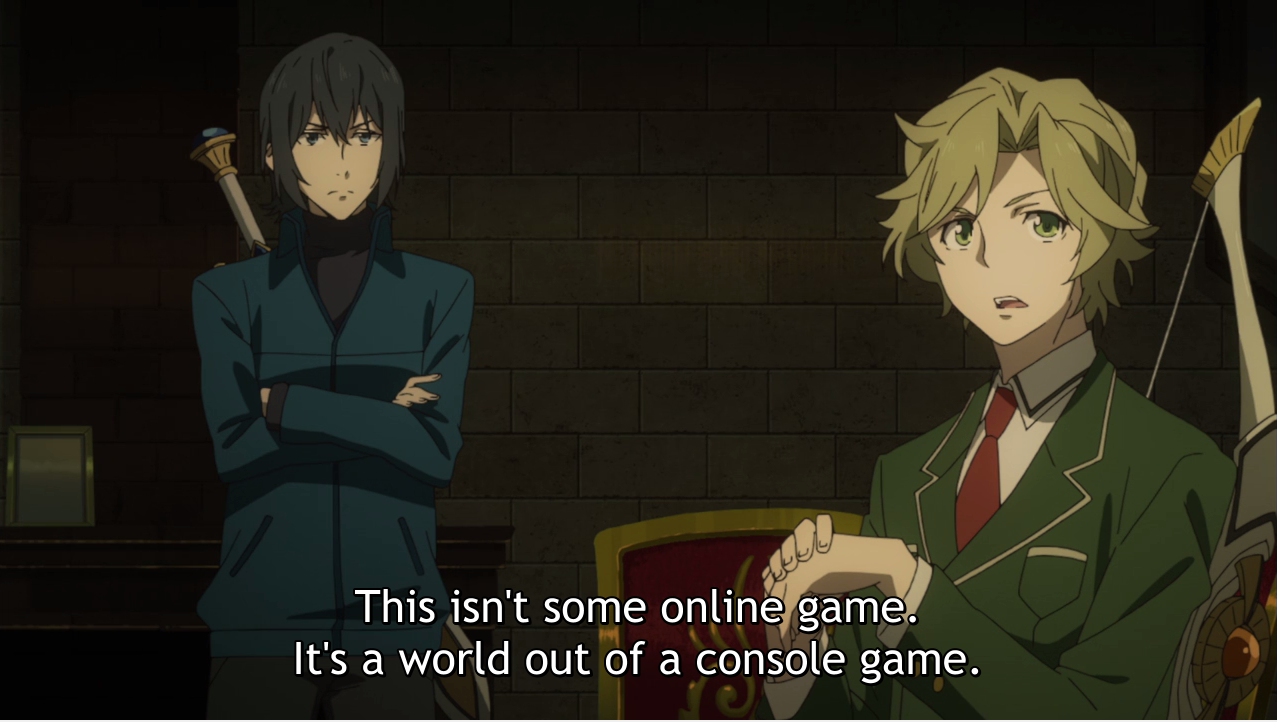 Each of the four heroes is summoned from Japan - but a Japan with a different history in each. They arrive in different ways – a console game, a MMORPG, (with or without virtual reality) or a book; the games in question are well-known classics in their own world, but unheard of in the others.
Each of the four heroes is summoned from Japan - but a Japan with a different history in each. They arrive in different ways – a console game, a MMORPG, (with or without virtual reality) or a book; the games in question are well-known classics in their own world, but unheard of in the others.
Naofumi’s book is an obvious homage to Fushigi Yuugi’s The Universe of the Four Gods; the anime even refers to it as Records of the Four Cardinal Weapons. The adjective “cardinal” has no obvious relevance in Tate no Yuusha, which even expands the number of heroes from the original four much later in the story, but does relate to the association of the cardinal directions and four gods; Suzaku of the south, Seiryu of the East, and so on.
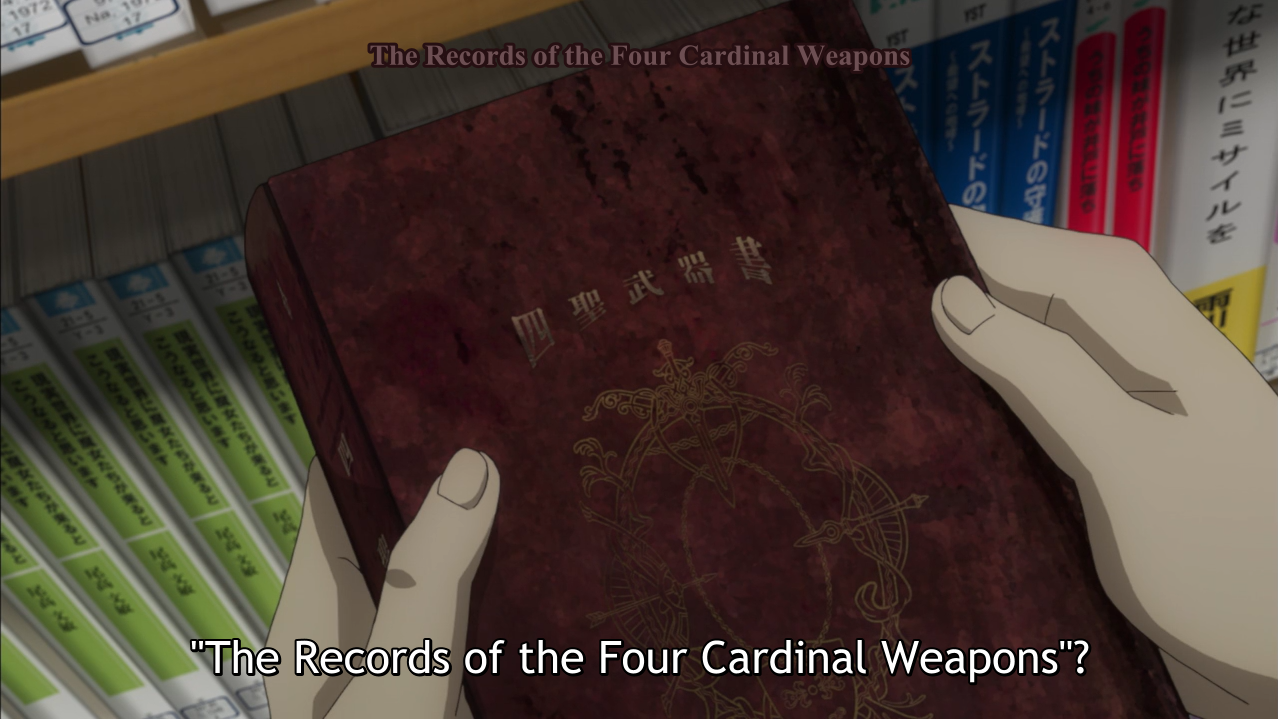
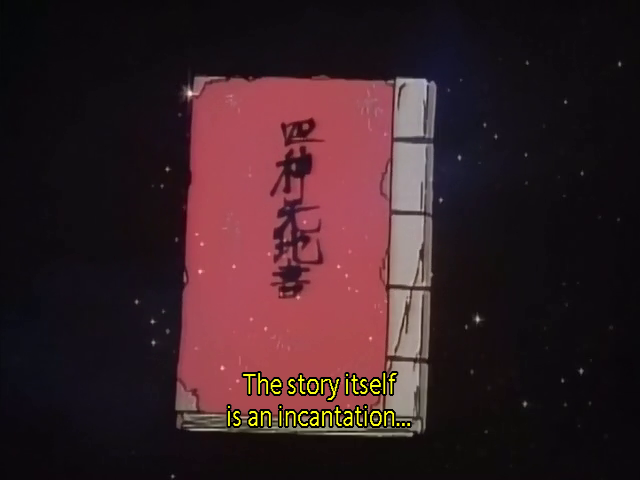 The two books, for comparison; the Universe of the Four Gods appears in the second picture.
The two books, for comparison; the Universe of the Four Gods appears in the second picture.
There are actually console game isekai anime which are rough contemporaries of Fushigi Yuugi; NG Knight Lamune & 40 aired in 1991, Monster Farm: Enbanseki no Himitsu in 1999, both in an age of poor internet connections and single-player industry domination. That said, otome games played on consoles are almost always the root of villainess isekai, so it’s not as though the concept has died out.
It is very common in contemporary isekai to use a MMORPG as the summoning mechanism, for the immense success of Sword Art Online has spawned many imitators. I’m too much of a purist to consider this particular series isekai, because the world seems designed in-universe as simply a video game, without its own independent reality, and is populated by people trapped therein, and the same is true of the earlier .hack//SIGN, whose World is experienced by the protagonist as the whole of existence, but other players as simply an MMO from which they can log out. But it is a thin line – even I would not quibble enough to deny the right of something like Overlord to be called an isekai, and most of SAO’s imitators dropped the company and programmer subplots and simply trapped people in a complete alternate world based on a game they played.
Naofumi, in addition to the old-fashioned summoning method, also has the distinction of being the only one of the four still alive. Isekai tensei series have exploded in popularity since 2012, and all three of his companions were killed in their prior worlds – one of them, Itsuki, even got hit by a truck.
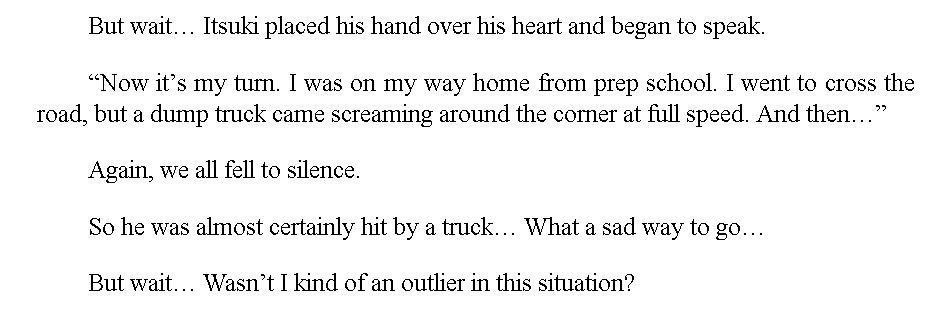 Deadly anime trucks originated with 1982’s Minky Momo, and were already common enough to be parodied in 1996 in Excel Saga. It is the enormously influential Mushoku Tensei light novel (2012) which turned them into a specifically isekai trope, and one of the three “modern” protagonists getting hit feels like about the right ratio.
Deadly anime trucks originated with 1982’s Minky Momo, and were already common enough to be parodied in 1996 in Excel Saga. It is the enormously influential Mushoku Tensei light novel (2012) which turned them into a specifically isekai trope, and one of the three “modern” protagonists getting hit feels like about the right ratio.
Beyond the common books, Tate no Yuusha often feels like Fushigi Yuugi with a case of role reversal. It is striking to think, given their differences in personality and story role between the two, that Malty S. Melromarc might actually be Yuuki Miaka’s counterpart!
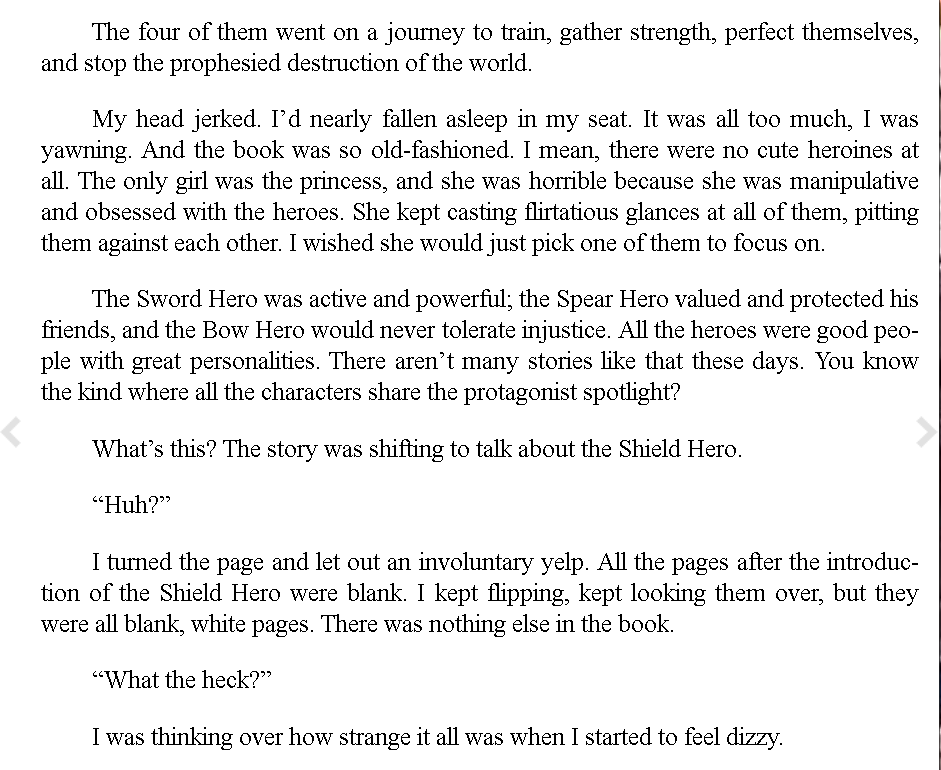
Vis-a-vis Miaka, this characterization would be a bit unfair; Fushigi Yuugi has reverse harem elements but it’s clear from an early point who’s going to win. That said, the indecisive shoujo heroine is a trope for a reason; Tenkuu no Escaflowne’s Kanzaki Hitomi may be closer to the mark. And of course, in this case they’re actually talking about Malty.
Both Raphtalia and Hotohori pine for a prophecized, otherworldly hero, but the former is a slave and the latter an emperor. In both series, a rape accusation alienates the protagonist from their companions and proving it to be false proves a turning point in the story - but Naofumi is the alleged rapist, while Hongou Yui believes herself to have been the victim, and Miaka herself later suffers a similar fate to her best friend.
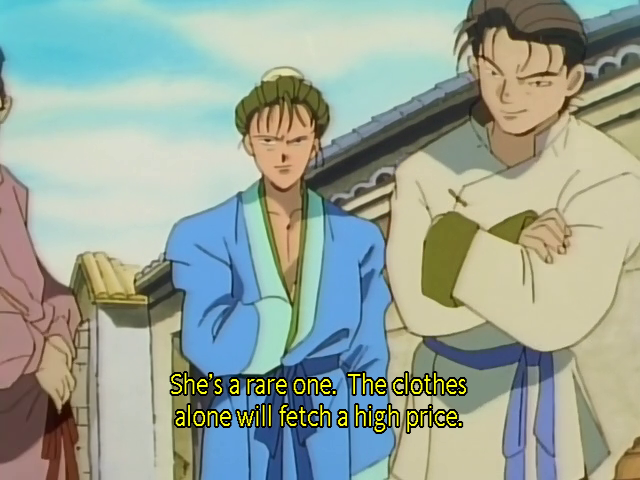 And then there is the matter of slavery.
And then there is the matter of slavery.
Tate no Yuusha is often thought of as the trope codifier of slavery in isekai, and its use of magical obedience contracts has spawned its share of imitators; Kuro no Shoukanshi’s main character buys a half-elf slave in a way which would once be unheard of for a protagonist, Isekai Meikyuu de Harem wo! takes the concept of demihuman slavery in a far more sexual direction, and one which was sadly typical of slavery in human history, and Tensei Shitara Ken Deshita’s heroine Fran, who shares more than a little in common with Raphtalia, is liberated by the title character from a monster attack, complete with burning up her slave contract with fire magic.
Slavery, it should be noted, is as old as history. This is true both in a global sense, as it is mentioned in our earliest tablets from Sumer, and with regard to the history of Japan. The Records of the Three Kingdoms reports that Queen Himiko, the first externally attested ruler in Japanese history, gave the court of Wei China a tribute of long, decorated pieces of cloth along with ten slaves. Fantasy has long taken inspiration from historical settings – in Tate no Yuusha, the whole concept of a power struggle within the royal court, or an all-powerful tyrannical regent, also draws on the political systems of the past. And when Naofumi is introduced to the idea of buying a slave, he mentions having read about them in manga and video games, many of them isekai.
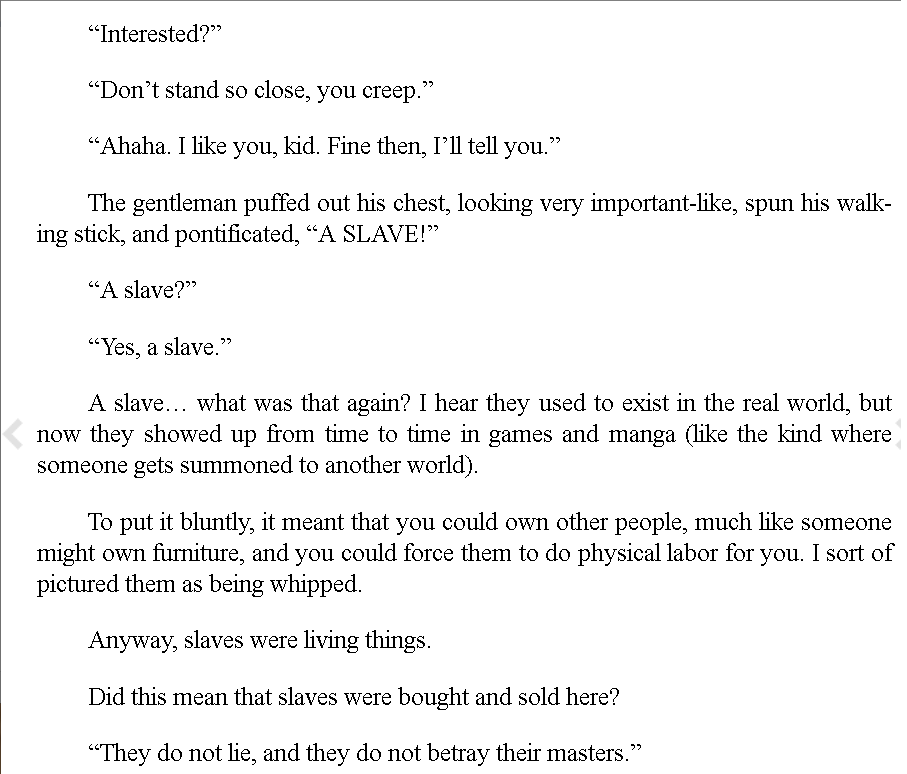
In Fushigi Yuugi, enslavement is the very first danger our heroine faces, in another case of role reversal – but Tamahome rescues her.
Juuni Kokuki originated as a series of novels, and its protagonist, Youko, is at one point deceived by the first woman in the other world who showed her any kindness instead of thinking her a monster; after taking her in and feeding her, she sells her to a brothel, from which she must make her escape. The selling of women (typically daughters, by impoverished parents) to brothels remained common in Japan long after other forms of slavery died out in the early 1600s, only being definitively abolished during the occupation period after the Second World War. I’m not sure if Naofumi (or Tate no Yuusha's author, Yusagi Aneko, for that matter) read it or watched the anime adaptation (so technically neither manga nor games, though Naofumi has read plenty of light novels). But regardless, it’s a fascinating series in its own right, and another example of enslavement as a danger facing characters in older isekai.
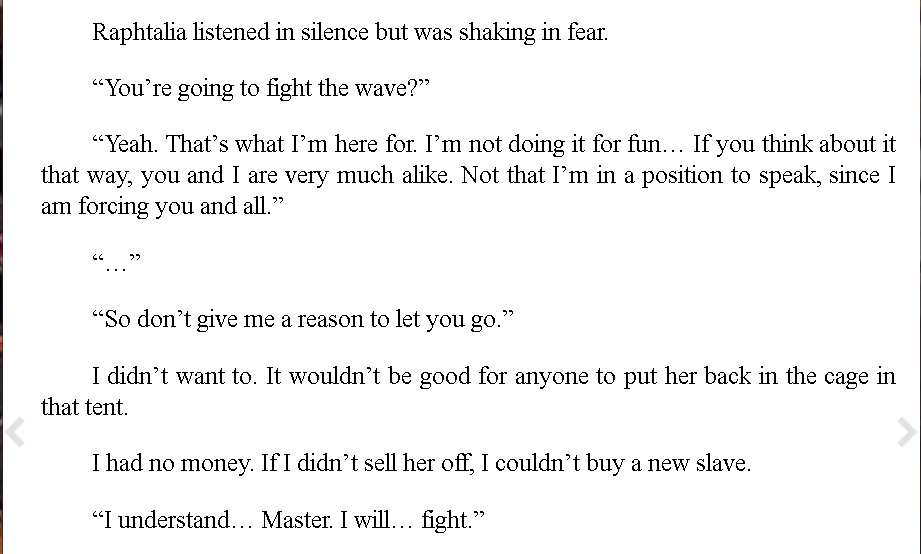
There is no small number of humans in the historical record who were taken from lands far from home and forced to risk their lives to protect the countries in which they had arrive. A few of them received fantastic rewards beyond their wildest dreams for their services, but they were still denied the ability to return home.
By this I mean slave soldiers – an institution rare in the slave system of the Americas, which tends to dominate depictions of slavery in the English-speaking world. Freedmen frequently entered military service in the Americas in exchange for their own emancipation, and slaveowners who were also generals or officers would at times bring slaves with them on campaign; William Lee, owned by George Washington, was one of his most important aides during the American Revolutionary War. But the idea that one could simultaneously be a slave and a soldier did not exist, hence the former category being freedmen and the latter acting in an unofficial role.
This was not the case in the Islamic world, where rulers often preferred slaves purchased from abroad, who had no social ties except to their owners, to armies recruited from their own countrymen. A small fraction of these men became very wealthy indeed, commanding armies and living lives of luxury which were the envy of their free countrymen; some even became kingmakers or emancipated themselves in the process of founding their own dynasties.
It would be a mistake to think of Naofumi as a typical slave master; in a way, he, too, is not even a free person, and neither is the typical isekai protagonist. Narratives of those slaves and free explorers who spent extensive time in foreign lands, yet managed to make it home have long fascinated audiences around the world. With our own world fully explored, and extraterrestrial life, if it exists, far too distant, all we can do is imagine other ones.